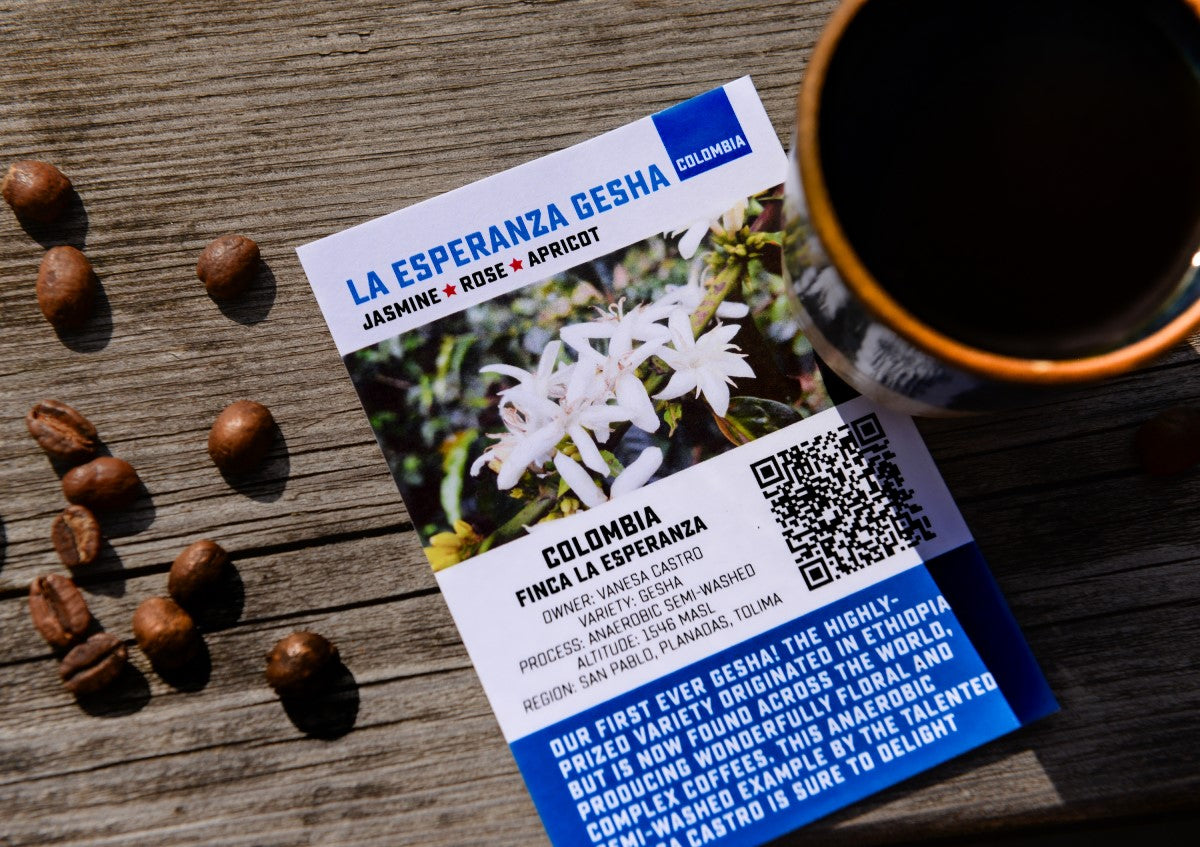Of all the various legends and symbols associated with speciality coffee, perhaps none is more famous (infamous?) than the Gesha variety, which has continued to captivate drinkers and coffee professionals around the world since it burst onto the scene in 2004. That year, a farm called Hacienda La Esmeralda introduced a variety called Gesha into the Best of Panama competition, scoring extremely high marks and selling for a then-record-setting price.
We’ve just launched our first-ever gesha coffee, the Colombia Finca La Esperanza, so we thought this might be a good opportunity to explore this much-celebrated variety.
Varieties are naturally occurring and genetically distinct subspecies of coffee—for example, if you’ve seen Caturra or Bourbon on one of our labels, this refers to the variety. Or think of them like the fruit of another tree: Fuji, Red Delicious, and Granny Smith are all apples but they all have different characteristics, flavours, and textures.
Gesha (or “geisha” as it was originally named, we’ll come to that shortly) was discovered growing wild in the mountains of Ethiopia in 1936 by British colonial researchers, and made its way to Panama in 1963 via research stations in Kenya, Tanzania, and Costa Rica.
Since its Panamanian triumph—and associated high price point—in 2004, the variety has spread to many other growing regions and still carries that cachet of quality. Gesha coffees taste exceptionally sweet and floral and earn higher prices because of it.
The variety was originally prized for its robustness: it is resistant to coffee leaf rust, which in the 60s was affecting farms in Central America. However it really thrives at high altitudes, where rust is less of an issue, and in general gesha is quite difficult to grow with relatively low productivity, which meant that many farmers ignored it until its renaissance in the 2000s.
The original records from its discovery list the variety as “geisha”, which is the name it travelled with to Central America and thus what such coffees were called. The researcher who logged the variety discussed a trip to “the Geisha coffee area” and referenced “Geisha Mountain” in his letters, but there is no Geisha Mountain in Ethiopia. It’s possible that the reference is a misspelling of the Gesha region, or possibly a transliteration from the Amharic language, or perhaps the word “geisha” was just more familiar to the original researcher and the name stuck.
There has been plenty of debate about the correct term: it was originally from Ethiopia, so perhaps Gesha is more accurate; but the varieties found today in Central and South America mostly came from the Panamanian transplant, and that was listed as Geisha. To complicate things still further, a study in 2014 found the two varieties to be basically genetically identical. The real issue comes from the other meaning of the word “geisha” and its associated misuses—some coffee roasters have definitely sold the coffee using exoticised Japanese or otherwise Asian imagery.
As writer Jenn Chen notes in an article for the coffee publication Sprudge, “What some might consider a delightful homophone has become a kind of carte blanche for inappropriate appropriation—taking images and motifs associated with the Japanese tradition of art, song, and dance, and using it to sell high-priced coffee.”
Chen suggests moving away from using the name Geisha and instead going with Gesha across the board. That way, she writes, “We can hopefully, and definitively, avoid seeing any future instances of Orientalist imagery being used to market and reference this coffee,” and “we can wax poetic about this truly delicious and inspiring coffee variety while properly evoking its Ethiopian heritage, and without confusing consumers as to its origin.”
Because the gesha variety is delicious. It’s so tasty that it is constantly being sold for staggering sums at auction, and continues to be used by the world’s best baristas in competition routines. Although it might be grown in Panama, Costa Rica, or Colombia, a gesha coffee will still boast the delicacy and florality of the best Ethiopian coffee.
This is what we’ve found with our new Colombia La Esperanza: extraordinarily delicate and floral, but also sugar-sweet and complex. It’s a true delight, and lucky single origin subscription customers can try it soon as they will be receiving it as September’s sub!

